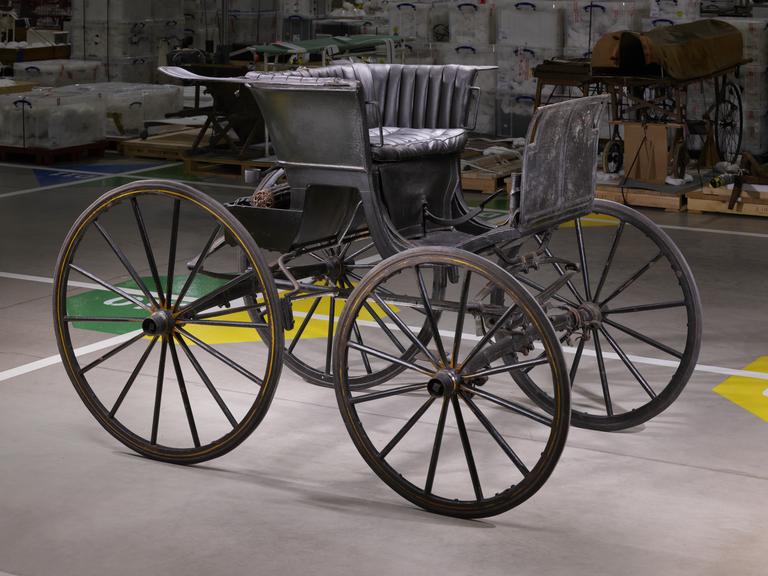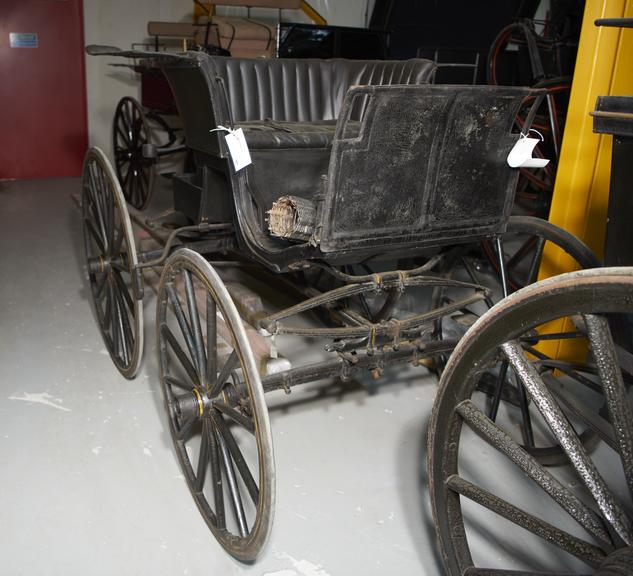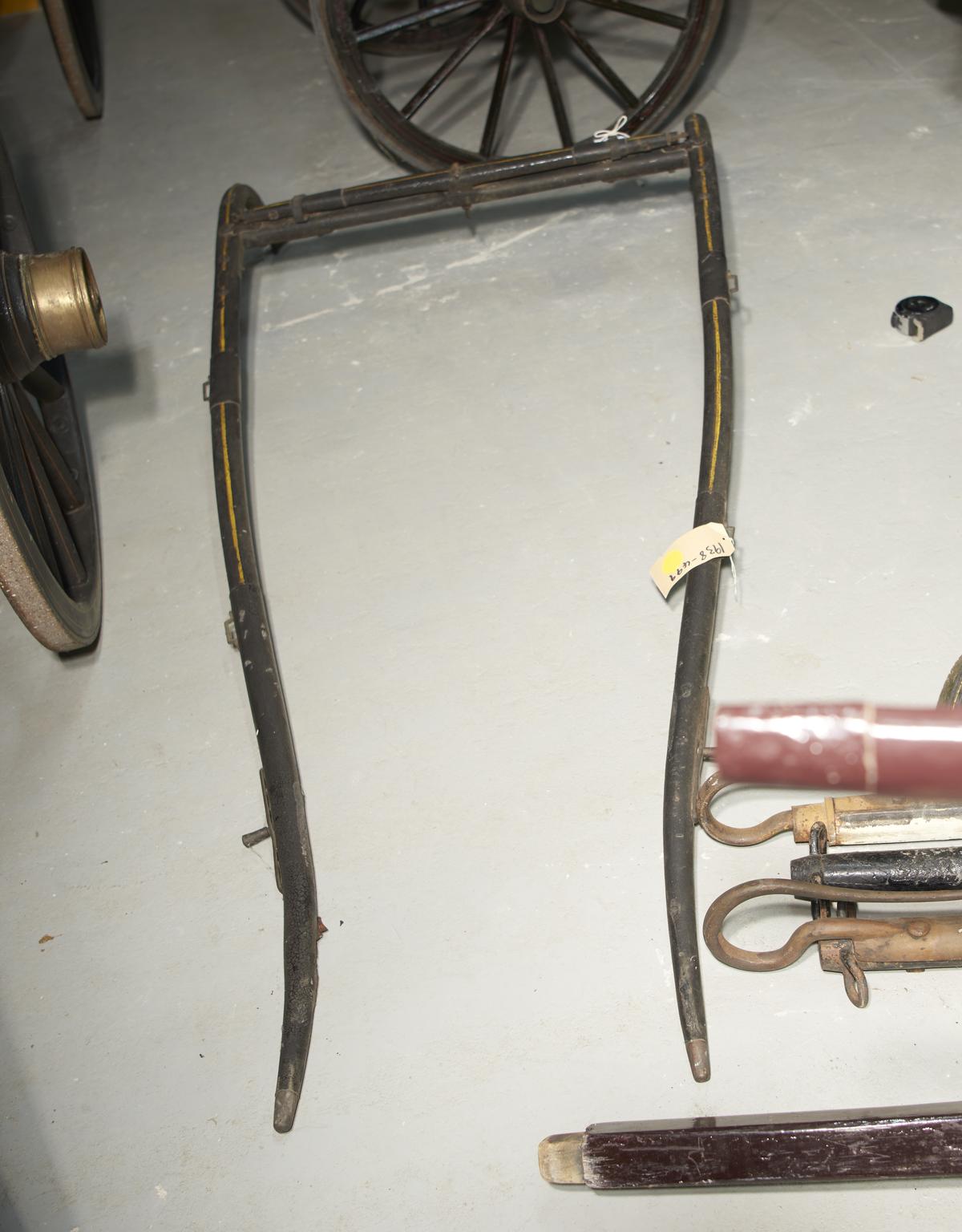Australian Road Wagon, Late 19th Century
This Australian Road wagon was built in the late 19th century by an unknown maker. It is a four-wheeled, two-seat carriage with a simple design.
Its two seats are uncovered and have black leather upholstery, and the body and undercarriage of the vehicle is painted black. The front of the carriage has irons for coach lamps, and a bracket to hold the horse whips, and a cane umbrella holder. Behind the seat box at the back of the vehicle is a small storage tray/box.
A notable feature of this wagon are the two transverse elliptical springs which was located widthways across the front and back axles. The rear wheels also come with wooden spoon brakes controlled by a driver’s side foot pedal. The large front and back wheels have solid rubber tires, which are covered by high mudguards.
More
Road wagons are small, lightweight, four-wheel vehicles designed with large wheels and metal springs designed for durability and comfort. This design of carriage was especially popular in Australia and are also commonly referred to as buggies. Road wagons/buggies came is a wide array of variants, which were often distinguished and named based on the shape of their body. Whilst most variants of road wagon/buggy came with hoods, it was possible to buy ones without them.
This particular road wagon/buggy is likely a Goddard Buggy, which was named after its American designer Thomas Goddard. The key distinguishing feature of this variant is its curved dropped front which made it easier for people to access the carriage. This carriage also has other, more general features commonly seen in road wagons/buggies such as double elliptical transverse leaf springs at its front and rear, real-wheel spoon brakes, and high rear mudguards, all of which helped ensure a smooth and comfortably ride.
- Measurements:
-
overall: 1470 mm x 1400 mm x 2180 mm,
- Materials:
- wood (unidentified) , metal (unknown) , paint , leather , rubber (unidentified) and osier
- Object Number:
- 1938-499/1
- type:
- wagon
- Image ©
- The Board of Trustees of the Science Museum








